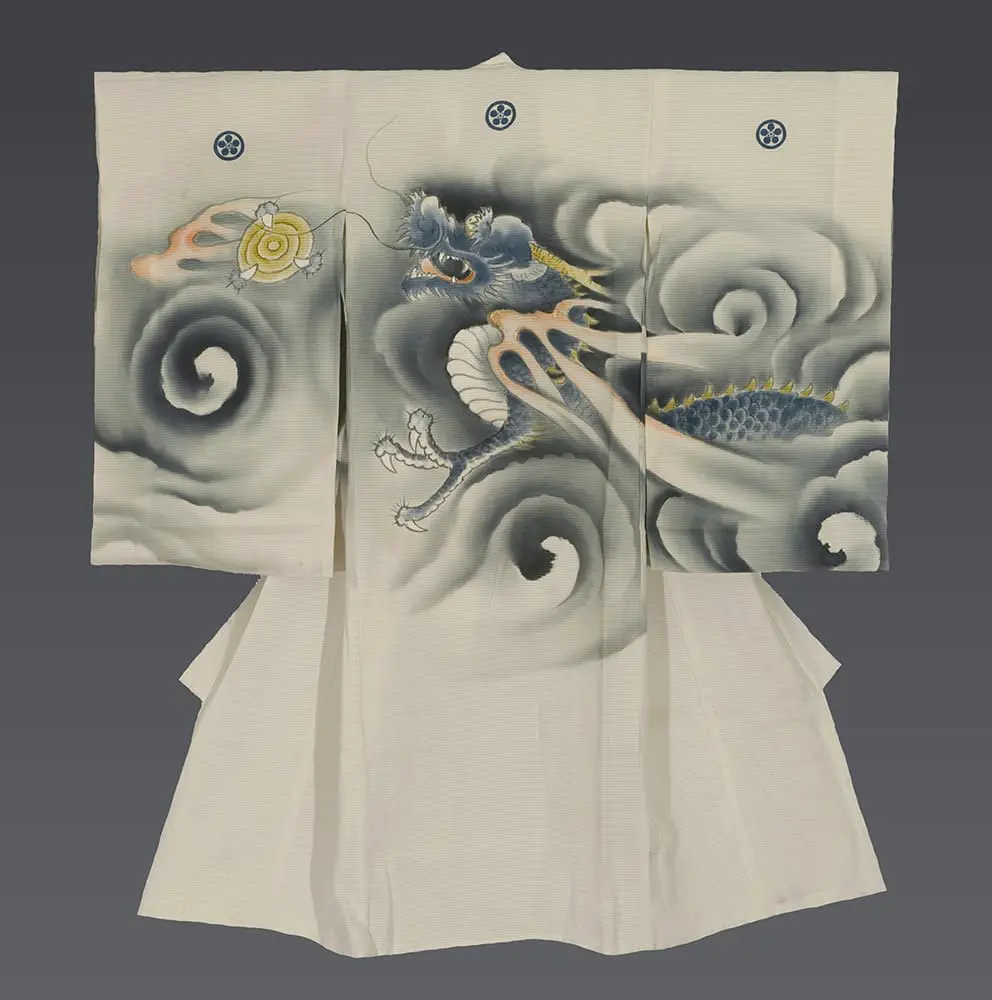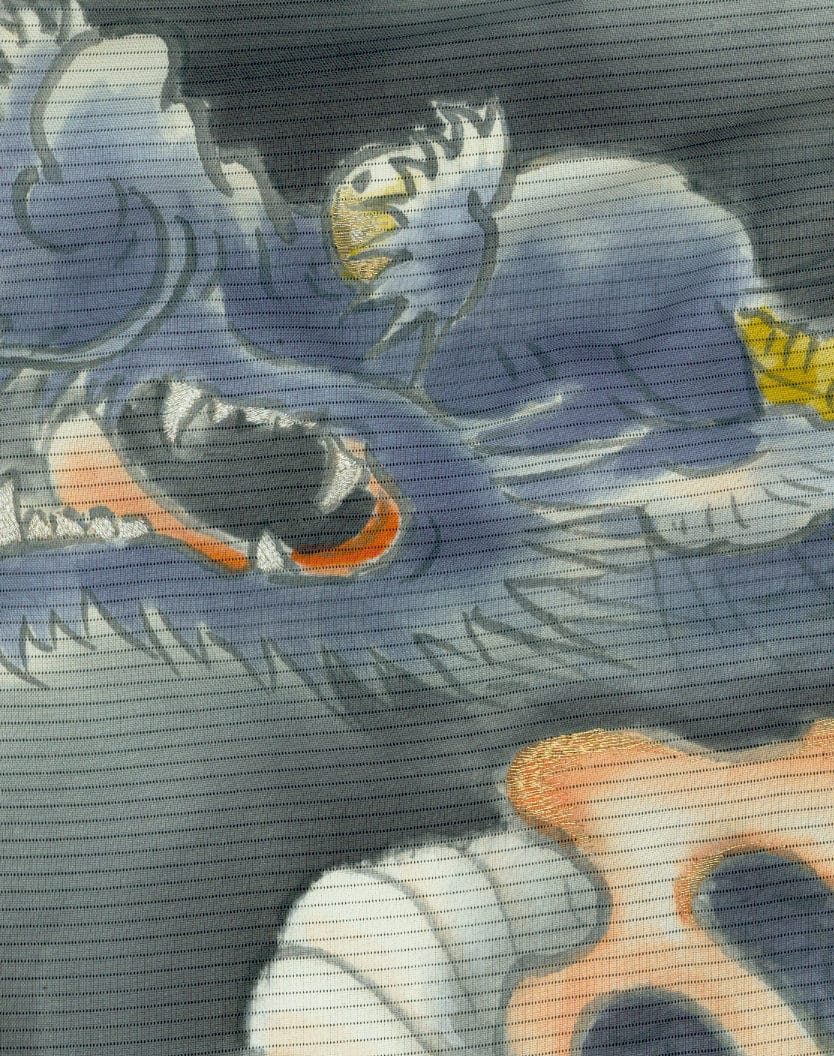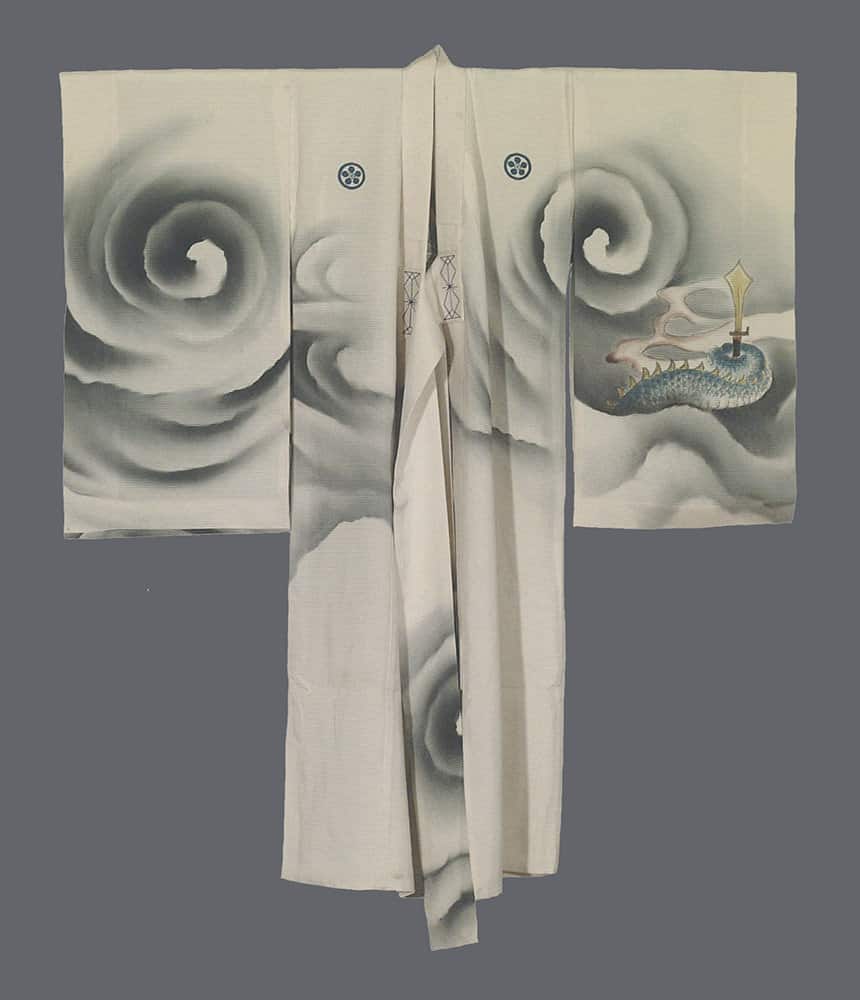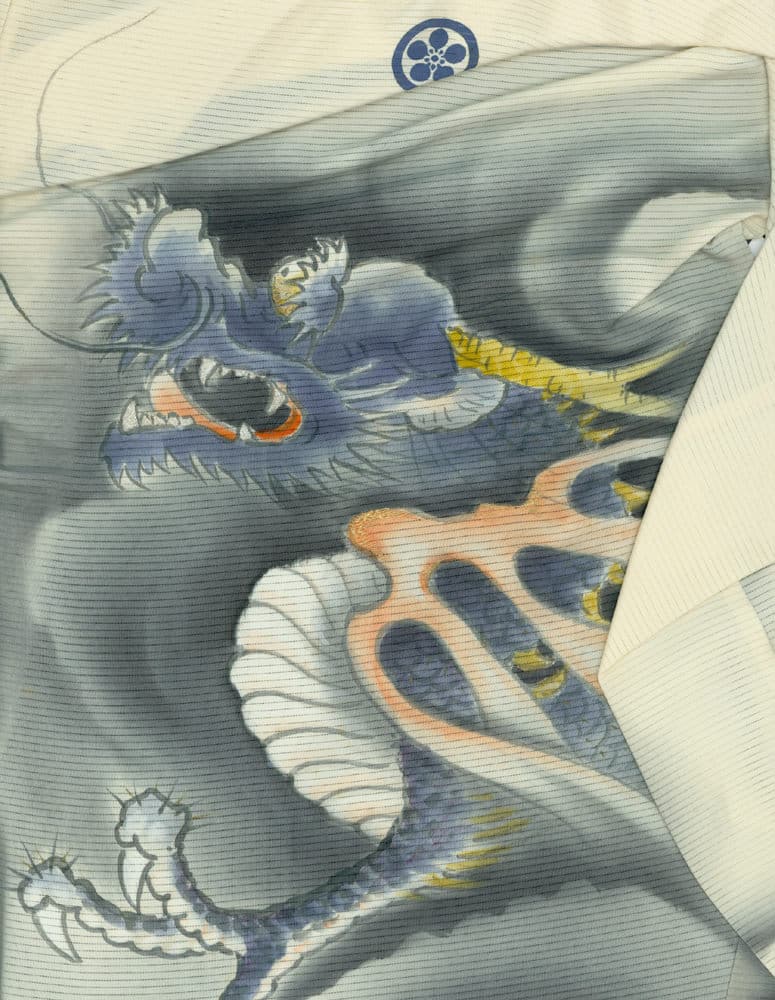This summer ro miyamairi kimono showcases a magnificent dragon rendered in subtle gradations of gray and blue tones, its serpentine form emerging dramatically from swirling clouds that dominate the upper portion of the kimono. The artist has employed the transparent quality of the ro weave to create an ethereal, almost atmospheric effect, where the dragon appears to materialize from mist and vapor, enhanced by delicate hand-painting and strategic embroidery accents that catch light and add dimensional depth to key details.
The integration of embroidery highlights—particularly evident in the golden accents that punctuate the composition—represents the sophisticated multi-technique approach that characterized high-end Taishō-era textile production.
The symbolic significance of the dragon motif on a summer christening kimono would have carried particular resonance for families seeking divine protection and auspicious fortune for their male children. Dragons in Japanese culture embody wisdom, strength, and the power to control natural forces, making them especially appropriate for ceremonial garments worn during important religious or social transitions. The choice to execute this powerful imagery on delicate summer silk speaks to the sophisticated aesthetic sensibilities of the era, where even the most ethereal materials could carry profound symbolic weight, creating a garment that functioned simultaneously as luxury object, protective talisman, and artistic masterpiece.
It measures 35 inches (89 cm) from sleeve-end to sleeve-end and stands at 38 inches (97 cm) in height.
.avif)







